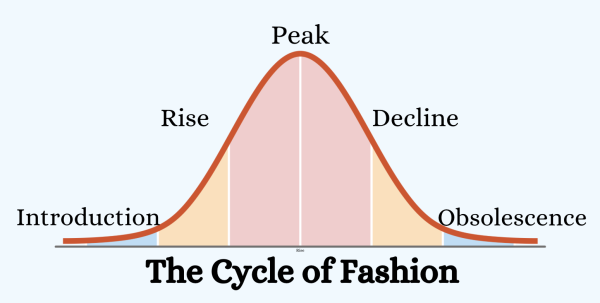Dream Big, Dream Lucid

The act of being aware in a dream is called lucid dreaming.
December 20, 2021
Everybody at YLHS sleeps (or should sleep), and many desire to escape from reality to take a break from the stress of life. Others want to fix their problems or confront their fears. One great way to do both is by taking control of dreams and using them as a pseudo-reality where nothing matters or can go wrong. Generally, the act of being aware in a dream is called lucid dreaming.
Lucid dreaming is not unknown in pop culture. Many films have been created around lucid dreaming like Christopher Nolan’s Inception, starring Leonardio DiCaprio and Cillian Murphy. Music has also been influenced. Both “Lucid Dreams” by Juice WRLD and “Higher” by Creed dealt with the concept.
One of the most prominent dream psychologists in the United States, with over 50 publications on the subject, Harvard Medical School Teacher Deirdre Barrett describes the occurrence based on a 1992 study: “This study examined the lucid dreams of 50 subjects as to whether they are also fully lucid for the following corollaries:
1) people in the dreams are dream characters
2) dream objects are not real, i.e., actions will not carry over concretely upon awakening
3) the dreamer does not need to obey waking-life physics to achieve a goal
4) memory of the waking world is intact rather than amnestic or fictitious.”
Although doctors and researchers have strict criteria, the general public accepts lucid dreaming as being aware that one is dreaming, or being able to control actions in dreams.
Benefits of lucid dreaming include using the dream as a “safe space” to apply therapy, or relaxing and being creative in a dream. For example, YLHS students who are mortified of public speaking (who wish to confront their fears privately) can work to simulate a scenario where they must speak to many people, and can practice without the consequences of embarrassment that would occur in real life.
Medical Science National Research Council Fellow at John Hopkins University Harry Wilmer deconstructs nightmares of combat veterans in 1996 book Trauma and Dreams (edited by Barrett). He suggests that Vietnam veterans’ dreams mostly consisted of being under attack. Wilmer cites German Romanticist and Philosopher Novalis in his portion of the dissertation: “In psychotherapeutic interviews with survivors, it seems wise to be also reminded of Novalis’ aphorism [truth], ‘every word is an exorcism.’” Talking about dreams is immensely therapeutic to trauma survivors.
If plain dreaming has such a positive therapeutic effect on people, couldn’t lucid dreaming do better?
If plain dreaming has such a positive therapeutic effect on people, couldn’t lucid dreaming do better? A Wall Street Journal article by Melinda Beck called “How to Tame Your Nightmares” explains how Stanford Psychophysiologist Stephen LaBerge sees lucid dreaming: “Once you realize that you are not in any danger, you can turn and befriend that ogre,’ and that insight may carry over into your waking life.” YLHS student Hannah Jebelli (10) shares the appreciation of this comfort: “I think lucid dreaming is reassuring, especially when I’m having a bad dream. Knowing that I have control is really cool.”
Mustangs can also experiment with abstract concepts or fictitious beings to gain ideas to write stories, produce music, or assemble artwork. Doing things that are impossible in real life like flying or using magic become possible and so do the possibility of carrying learned concepts into the waking world. Stanford Physicist Craig Webb explores lucid dreams that popular musicians like Taylor Swift, The Rolling Stones, and Mozart were inspired by in 2016 book The Dreams Behind the Music.
All of these benefits can come at the cost of being too good to be true. Some educated on the topic don’t believe that lucid dreams exist, but those who do acknowledge that inducing an awakened experience takes practice. Healthline’s Kirsten Nunez and Deborah Witherspoon recommend training oneself to constantly check their surroundings and determine whether they are currently “in reality” with the hopes that the habit would carry on into dreams. This “reality checking” method is the most common across avid and amateur lucid dreamers.
Students and Staff at Yorba Linda High School can take this information into consideration and use their daily rest period to add creativity and therapy into their lives. By learning methods to be alert during dreams and applying various therapy/creativity techniques, people can improve and enrich their lives. Happy dreaming!













































